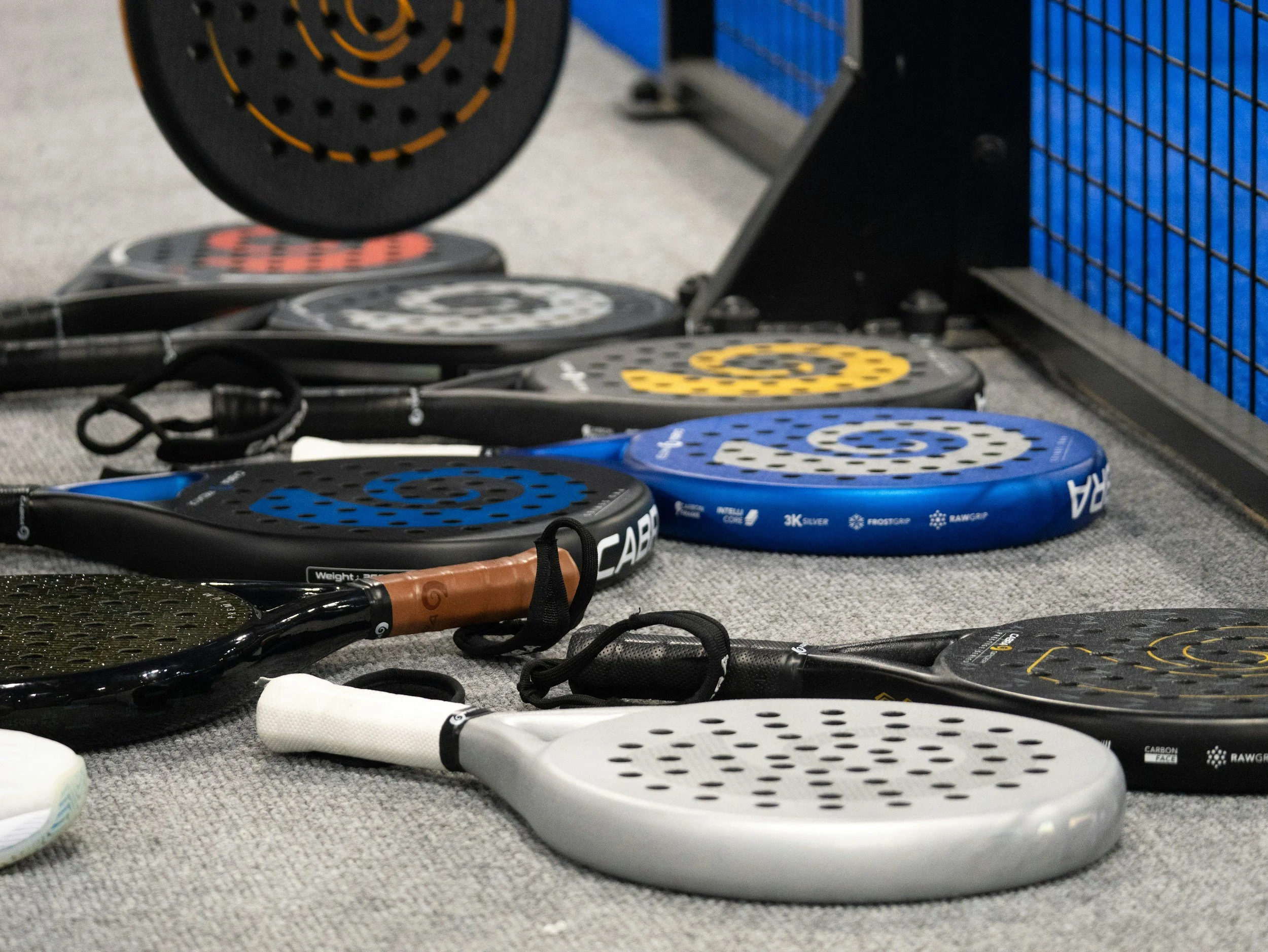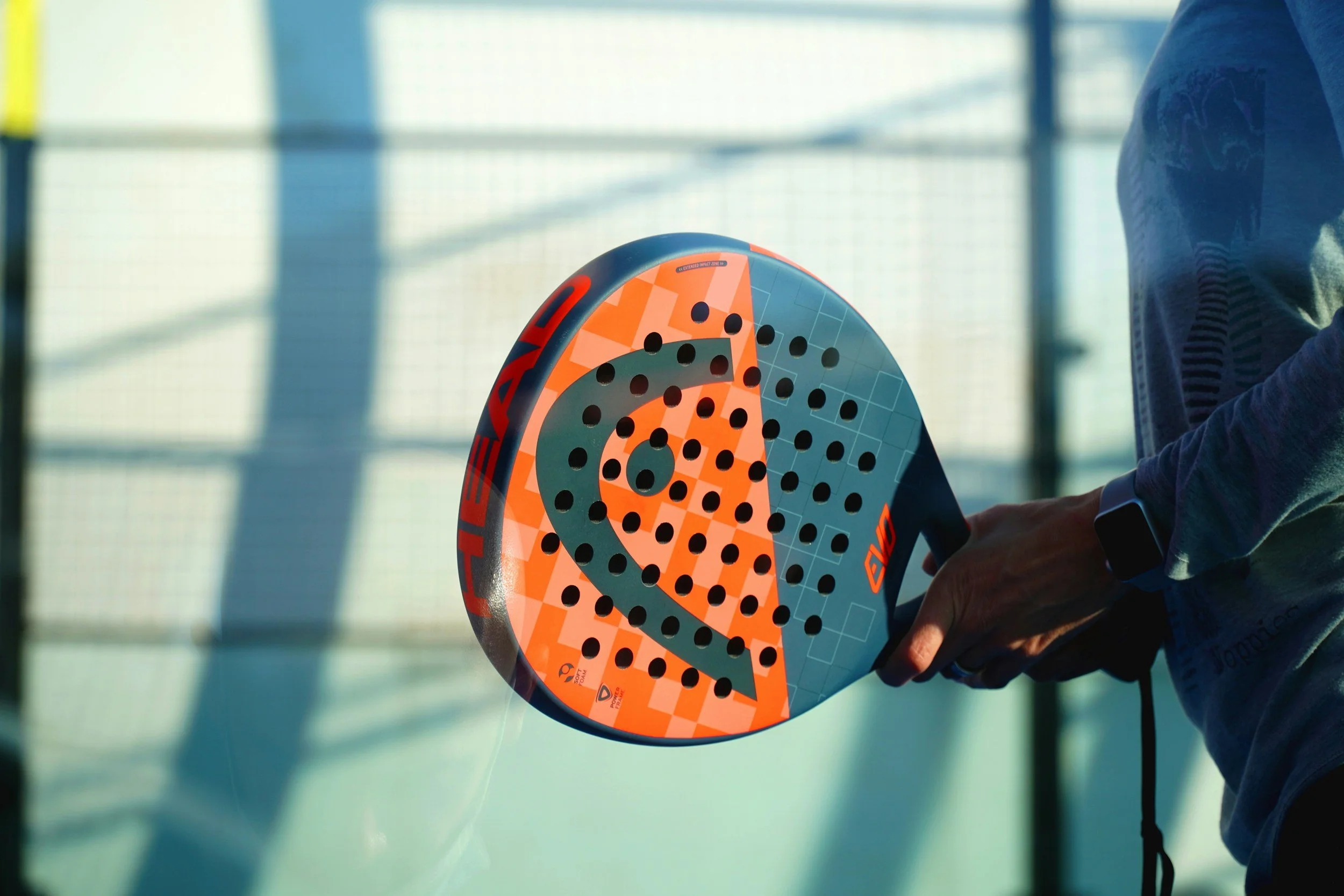How to Choose the Right Padel Racket🎾
If you're new to padel or looking to upgrade your equipment, choosing the right racket can make a significant difference in your game. With a variety of options available, finding the perfect padel racket can be overwhelming. This guide will walk you through the essential factors to consider to ensure you select a racket that suits your style and skill level.
1. Understand Your Playing Style and Skill Level
The first step in choosing a padel racket is to assess your playing style and skill level. Are you a beginner, intermediate, or advanced player? Do you prefer a more defensive game with controlled shots, or are you an aggressive player who loves powerful smashes?
Beginner: Look for a racket with a large sweet spot and lightweight design to help you with control and comfort.
Intermediate: You might want a balance between power and control. Consider rackets with medium weight and a mix of materials.
Advanced: Advanced players often prefer heavier rackets with smaller sweet spots for more precision and power.
2. Consider the Shape of the Racket
Padel rackets come in three main shapes: round, diamond, and teardrop. Each shape offers different advantages.
Round: Ideal for beginners, round rackets have a larger sweet spot and provide better control. They're also more forgiving on off-centre hits.
Diamond: Best suited for advanced players, diamond-shaped rackets offer more power but have a smaller sweet spot, requiring more precision.
Teardrop: A good option for intermediate players, teardrop rackets provide a balance between power and control, with a sweet spot that's slightly higher than round rackets.
3. Evaluate the Weight
The weight of the racket significantly impacts your performance. Padel rackets typically range from 340 to 390 grams.
Lightweight (340-360 grams): Easier to manoeuvre, ideal for beginners and players who prioritise control and comfort.
Medium Weight (360-375 grams): Offers a balance of power and control, suitable for most intermediate players.
Heavyweight (375-390 grams): Provides more power but can be harder to control. Preferred by advanced players who have the strength and technique to handle it.
4. Check the Balance
The balance of a padel racket refers to the distribution of its weight. Rackets can be head-heavy, head-light, or evenly balanced.
Head-Heavy: More power but less control. Suitable for aggressive players who like to hit hard.
Head-Light: More control but less power. Ideal for defensive players who prioritise precision.
Evenly Balanced: A mix of power and control, suitable for versatile players who adapt to different playing styles.
5. Material Matters
Padel rackets are made from various materials, affecting their durability, weight, and performance.
Fibreglass: Common in beginner rackets, fibreglass is flexible and offers good control but less power.
Carbon Fibre: Stronger and more durable, carbon fibre provides more power and control, making it a popular choice for intermediate and advanced players.
Graphene: Used in high-end rackets, graphene enhances power and reduces weight, offering superior performance.
6. Grip Size and Comfort
Choosing the right grip size is crucial for comfort and control. Most padel rackets come with a standard grip size, but you can add overgrips to adjust the thickness to your preference. Ensure the grip feels comfortable in your hand and allows you to maintain a firm yet relaxed hold.
Test Before You Buy
Whenever possible, try out different rackets before making a purchase. Many padel clubs and shops offer demo programs, allowing you to test various models and find the one that feels best for your game.
Conclusion
Selecting the right padel racket involves understanding your playing style, skill level, and personal preferences. By considering factors such as racket shape, weight, balance, material, and grip size, you can find a racket that enhances your performance on the court. Take your time, do your research, and test different options to make an informed decision. With the right padel racket in hand, you'll be ready to elevate your game and enjoy every moment on the court! 🎾



